This website uses cookies so that we can provide you with the best user experience possible. Cookie information is stored in your browser and performs functions such as recognising you when you return to our website and helping our team to understand which sections of the website you find most interesting and useful.
Bird Watching in Costa Rica
On the blog today, we hear from Danae. Danae was previously the Latin America Operations Manager for Tucan Travel and an ex-tour leader in Central America. She talks about the joy of bird watching in Costa Rica and the incredible feathered creatures you can spot in the jungle!
Add Your Heading Text Here
I have amazing memories of my year working as a Tour Leader around Central America back in 2018. I love showing travellers all that Latin America has to offer, such as incredible culture, the warmest people, and breathtaking landscapes. But mostly, the flora and fauna from the region! I’ve always considered myself a “nature lover,” but being in Costa Rica made me fall in love with birds more than ever. Here is my experience of bird watching in Costa Rica!
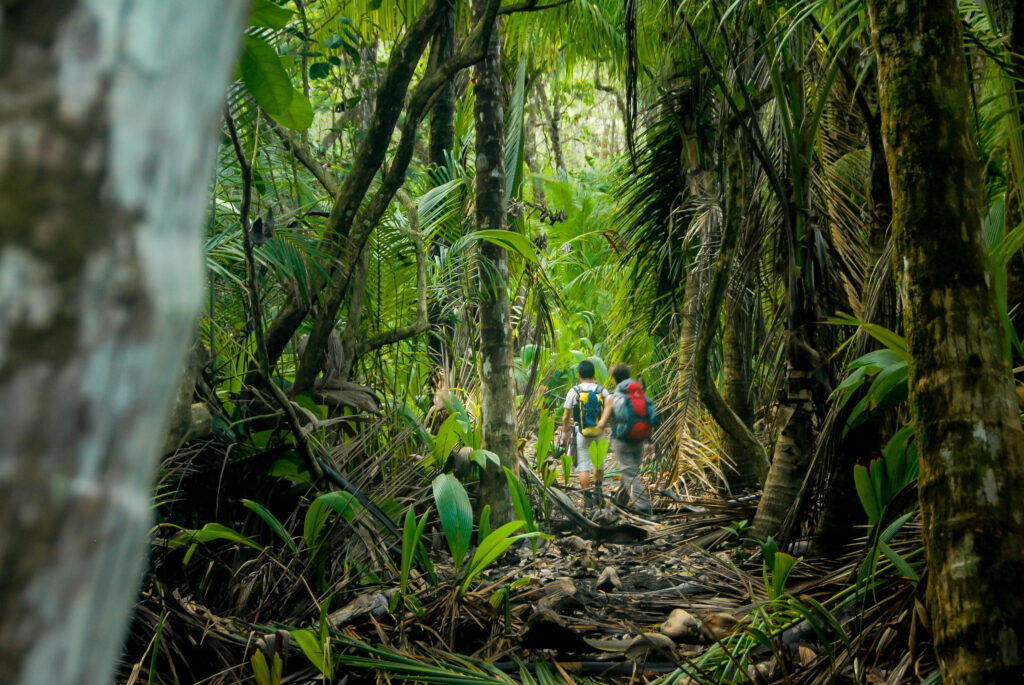
Waking before dawn to catch the chorus
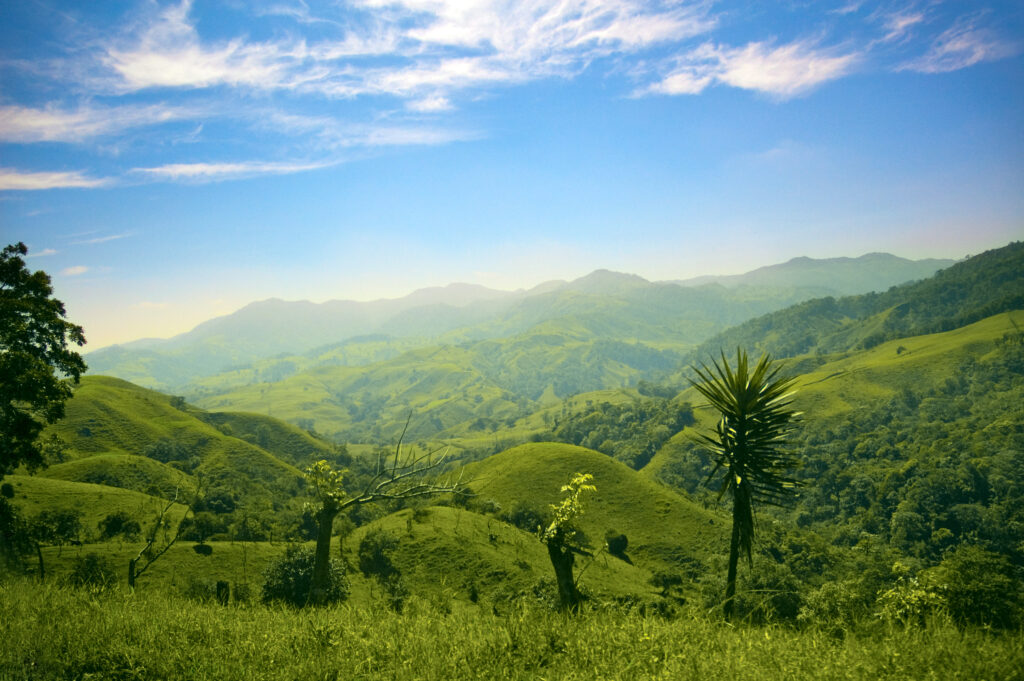
I would wake up before dawn and wear dark clothes to blend in with the background. Then get my binoculars and the big lens for my camera. I learnt about pishing (clench your teeth, open your mouth and whisper the word “pish”) to call the attention of our feathery friends; to be quiet and avoid sudden movements to not startle birds. Patience became my ally in order to make the most out of my day, studying the habitat and recognising where they were located depending on the kind of bird and the sound of their chime.
Did you know Costa Rica is home to the most diversity of birds per square meter on the American Continent? Recent studies have shown that there are 923 species in the country. These are only a few I was lucky to cross paths with:
Toucans (of course!)
You don’t need to say these are my favourite birds, right? To find them, I learnt to listen and follow the sound of their beautiful singing, rather than looking at the treetops. Six species of Toucans live from the country’s coast to the mountains. The most common to see is the majestic Keel-billed Toucan. With its strikingly coloured beak and the Black-mandibled Toucan, it’s the largest of this species in the region. The banana-shaped beak is hollow and weightless. It’s used to pick seeds and fruits, toss them into the air and catch them in an open mouth as they flip their head upward. Toucans mostly nest in tree holes made by woodpeckers, as their beak is not strong enough to do the same hard work.
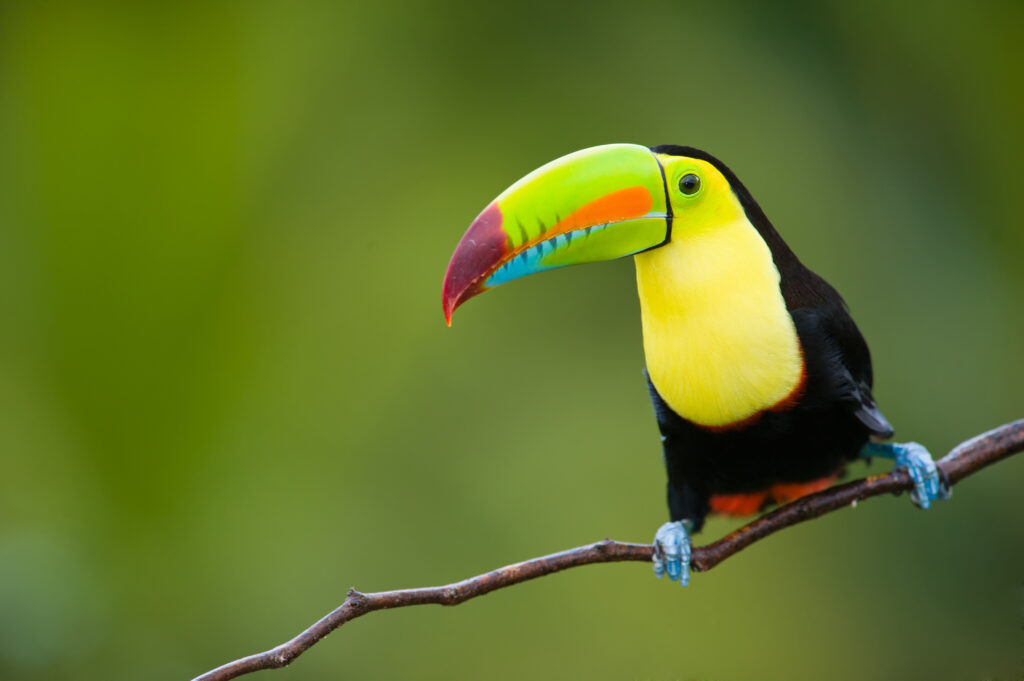
Here are some places you can visit to spot the famous toucan.
- Keel billed Toucan – Arenal Volcano, Manuel Antonio, Puerto Viejo
- Collared Aracari – Cahuita National Park, Central Pacific Mountain Ranges
- Black Mandibled Toucan – Tortuguero National Park
Quetzal
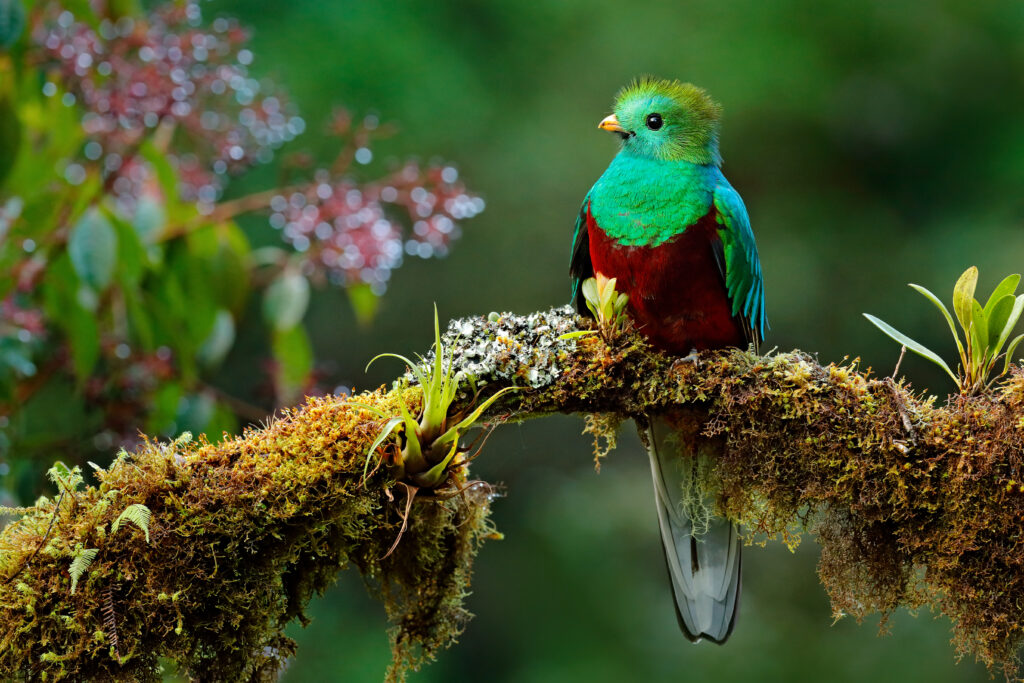
I couldn’t believe my eyes the first time I spotted this multicoloured bird. Dazzling green wings and back, red chest, yellow beak and a colourful tail that can reach up to 65 cm of length. No wonder they call it “Resplendent Quetzal”, it has been worshipped as a god (Quetzalcoatl) to the Mesoamerican Culture and is the symbol of the official currency for Guatemala. They are very hard to see but if you are around Monteverde Cloud Forest Reserve you might be amazed by its beauty.
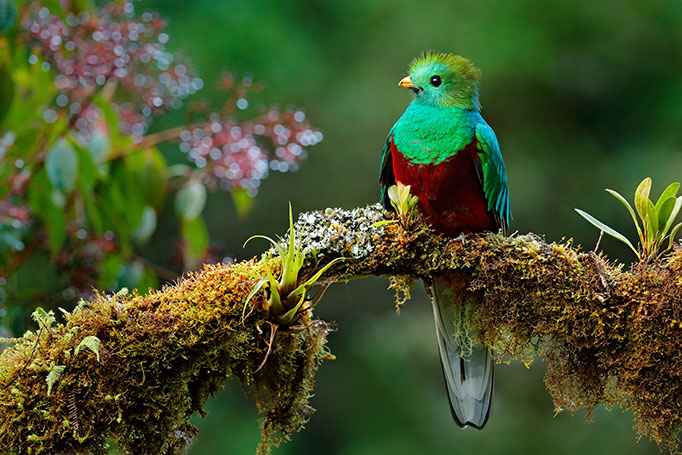
Hummingbird
Hummingbirds are the smallest birds on the planet. There are over 300 species of hummingbirds worldwide, but all are found only in the Western Hemisphere; most live in the tropical forests of Central and South America. These little fellas can be seen all across Costa Rica, which is home to 54 species, four of which are endemic to the region. Monteverde is the real paradise with its 26,000 acres of cloud forest!!
These are the types of hummingbird you might come across in Costa Rica.
- Green crowned Brilliant
- Purple throated Mountain Gem
- Rufous Tailed
- Striped Tailed
- Stripe Throated Hermit
- Violet Sabrewing

Motmot
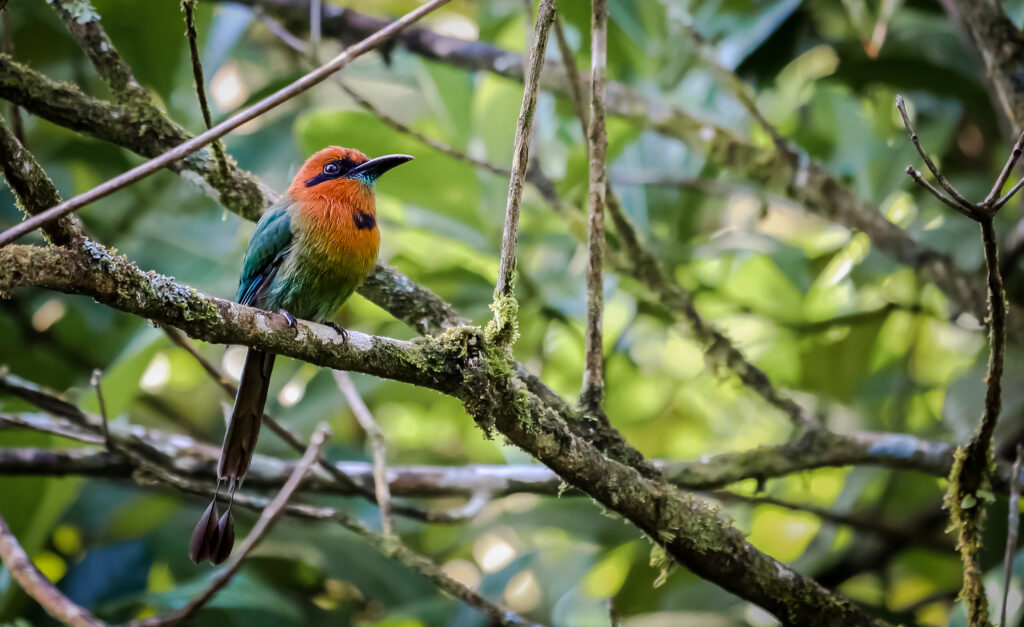
With six species of Motmots in the country, this tiny bird will stand out for its unique colour on its head, green and orange body, a down-curved and short, broad beak, which is serrated along the upper edge and a long, arrow-shaped tail. They are primarily seen in Manuel Antonio National Park, La Fortuna and Monteverde. This is because moorhens like to live near water, for drinking and bathing. They eat fruit, small reptiles and insects such as crickets, mealworms, and earthworms.
Woodpecker
These are just a few of the birds that you can spot on a trip to Costa Rica, but spend enough time wondering through the rainforest and you are sure to see many many more! On top of bird watching in Costa Rica, the country is home to various other animals such as monkeys, sloths, reptiles, tapirs, turtles and amphibians. If you’re a lover of wildlife, Costa Rica is the perfect holiday for you!
Check out the trips on Animal Welfare and Responsible Travel.
We are passionate adventure travelers who want to share the world and our travel experiences with everyone…
